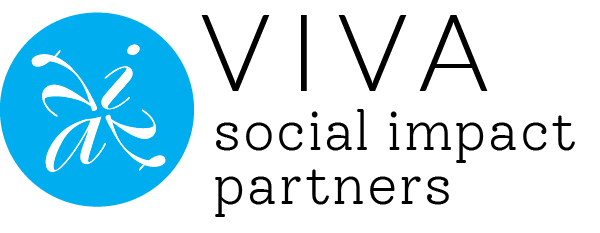
The Quality Counts California (QCC) Local Consortia and Partnership Grants RFA released January 31, 2020 merged First 5 and California Department of Education funding streams for quality rating improvement systems (QRIS) into one grant. Nine years after the Race to the Top Early Learning Challenge catalyzed the development of QRISs in California, and five years after the expansion of support for quality through CDE’s CSSP and First 5 CA’s IMPACT investment were made, we now have an exciting opportunity to continue the momentum to improve the quality of programs for young children.
Designing and building QRISs has strengthened connections between existing quality improvement activities, deepened and expanded support for our early education workforce and elevated quality. Change brings opportunity. Having worked alongside many of you on the QRIS journey, we wanted to share our thoughts on how to use upcoming changes as strategic opportunities as you look towards the future of quality improvement in your communities.
Important Strategic Questions
As you delve into the many changes on the horizon, pause and reflect on the following critical questions and you will be better equipped to put these changes into that context of what is important to your community:
- What is the long-term vision of your quality early learning system in terms of the impact you are trying to have on programs, educators, and the children they serve?
- What are the priorities that you stand behind regardless of shifts in State requirements and funding.
Top Changes & Opportunities
What changes that have been put forward by QCC do we think will have the most significant changes for counties’ outreach, community impact and cost?
- Changes in rating requirements and frequency of ratings
- Increasing emphasis on improvement over rating
- Changing the California’s QRIS regional structure to match CCSESA Regions
- Changes in data collection and data requirements
Questions to Explore
While you wait for the release of IMPACT 2020/QCC 2020, we have pulled out what we think are some good questions to be thinking about with your partners.
| Current | New | Key Questions to Ask |
| Rating Approach | ||
| All programs participating in the QRIS are rated according to state standards set in the matrix | Formal ratings are only required if required by statute | Do we want to continue to rate all of our QRIS sites or only those required by statute, i.e. our State Preschool Program sites? |
| Programs are rated every 2 years. | The rating cycle for rating programs against State standards will shift from every 2 years to every 3 years for lower rated programs (Tiers 1 and 2) and every 5 for higher tiers (Tiers 3-5). | Is it important to our model and approach to rate more frequently, i.e. maintain a 2 year cycle or are we OK with reducing the frequency? |
| Rating programs and providing quality improvement supports have both been important parts of the QRIS with some emphasis on moving sites towards being fully rated. | There is an increased emphasis on improvement over rating. | Is the improvement, the “I” more important, as important or less important than the rating, the “R” of our local system?
What have been our successes and challenges in working with non-rated programs and how can we strengthen our onramps to quality in a diversity of settings? |
| Regional Hubs | ||
| Currently there are QRIS specific regional hubs. | The regional structure would change to align with the California County Superintendent Educational Services Association (CCSESA) regions. | What kind of capacity, needs and priorities do your potential new partners have?
Where are there opportunities to be proactive in thinking about this change? How can we start to learn more about potential new partners? |
| Changes in Data Collection & Reporting Requirements | ||
| Currently county consortia can use different data systems and are required to submit specific common data for their IMPACT and CSPP funded sites. | There may be a move to a state data system. This is part of the planning that is underway with the Early Learning Master Plan. | Are we maximizing the use of the data we are currently required and choosing to gather?
Are we using our data to guide our continuous improvement and planning and to communicate our impact? What is critical for the State to know about what we want from a State data system? |
Five Action Steps to Take
- Set Strategic Priorities: Establish a process to answer key strategic questions with your partners to be clear on your future direction. This could be an update to a QRIS or related strategic plan.
- Know Your Cost: Be clear on your current and potential costs of your quality improvement system. We have worked with our clients to develop detailed cost models for their systems. If you have a cost model or other detailed budgeting tool, start looking at the cost implications of changes to your approach and/or your scale.
- Clarify Your Communications: Be prepared with messages to communicate to your key stakeholders so they know the information that will have an impact on them. Confirm the who, what, when, how of your messages.
Draw on Data: Use your QRIS data in concert with other health, education, demographic and risk factor data to inform your planning. - Reassess your Partnerships: Affirm that you have the right partners at the table, given not only your future quality improvement work locally and regionally, but also how this connects to other critical issues and work that supports the health and development of children, such as developmental screenings.
Opportunities to Keep on the Radar
QCC Equitable Learning Opportunities Grant. A FAST turn around grant to support equitable learning opportunities with a focus on early multi-language and multi-literacy development, family child care homes, and family, friend, and neighbor care, and improving adult:child interactions. ELO grant plan and budget is due February 18, 2020, and the funds must be expended by July 28, 2020.
Workforce Development Grant. Projected to be released in late February or early March, the competitive grant is focused on providing supports that improve the educational attainment and retention of early learning and care professionals. Funding totalling $195 million over 5 years will be awarded to local and/or regional partnerships. A local plan will be required.
Master Plan for Early Learning & Care. A very comprehensive approach to looking at how to move the preschool and child care system forward. report expected to be released in October 2020.
Department of Early Childhood Development. The Governor’s 2020-21 budget proposed that a Department of Early Childhood Development under the California Department of Health and Human Services Agency be established by July 2021.This would result in “consolidating child care funding streams and programs under a single system of state administration.”
At VIVA, we are working with our current clients and their partners in the continued growth of early learning and care systems to affirm priorities for the future. We have been immersed over the past 8 years in strategic planning, data visualization and analysis to inform decision-making, cost modeling, sustainability planning, facilitating partnership development and developing high impact communications for QRISs across California. We are looking forward to seeing what comes next and look forward to continuing to work in partnership with many of you across the State.
Keep in Touch
VIVA will continue to follow these changes closely and provide ongoing insights and analysis as more details become available. Sign up to receive our newsletter or reach out to VIVA Consultant, Iris Elent, MSW, if you have any specific questions about how you can best prepare for the upcoming changes in support of quality early learning. We are here to help!
